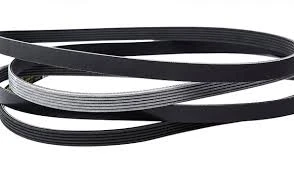- Arabic
- French
- Russian
- Spanish
- Portuguese
- Turkish
- Armenian
- English
- Albanian
- Amharic
- Azerbaijani
- Basque
- Belarusian
- Bengali
- Bosnian
- Bulgarian
- Catalan
- Cebuano
- Corsican
- Croatian
- Czech
- Danish
- Dutch
- Afrikaans
- Esperanto
- Estonian
- Finnish
- Frisian
- Galician
- Georgian
- German
- Greek
- Gujarati
- Haitian Creole
- hausa
- hawaiian
- Hebrew
- Hindi
- Miao
- Hungarian
- Icelandic
- igbo
- Indonesian
- irish
- Italian
- Japanese
- Javanese
- Kannada
- kazakh
- Khmer
- Rwandese
- Korean
- Kurdish
- Kyrgyz
- Lao
- Latin
- Latvian
- Lithuanian
- Luxembourgish
- Macedonian
- Malgashi
- Malay
- Malayalam
- Maltese
- Maori
- Marathi
- Mongolian
- Myanmar
- Nepali
- Norwegian
- Norwegian
- Occitan
- Pashto
- Persian
- Polish
- Punjabi
- Romanian
- Samoan
- Scottish Gaelic
- Serbian
- Sesotho
- Shona
- Sindhi
- Sinhala
- Slovak
- Slovenian
- Somali
- Sundanese
- Swahili
- Swedish
- Tagalog
- Tajik
- Tamil
- Tatar
- Telugu
- Thai
- Turkmen
- Ukrainian
- Urdu
- Uighur
- Uzbek
- Vietnamese
- Welsh
- Bantu
- Yiddish
- Yoruba
- Zulu
พ.ย. . 20, 2024 15:14 Back to list
ribbed belt
Understanding Ribbed Belts The Unsung Heroes of Automotive Engineering
When discussing automotive components, certain parts often steal the spotlight—engines, brakes, and transmissions, for instance. However, nestled quietly within the engine bay, ribbed belts play a crucial role in ensuring that vehicles operate smoothly and efficiently. Understanding ribbed belts and their function can provide valuable insight into automotive engineering and maintenance.
What is a Ribbed Belt?
A ribbed belt, often referred to as a serpentine belt, is a crucial component in modern vehicles. Unlike traditional V-belts that drive individual accessories, a ribbed belt is designed to drive multiple auxiliary components of an engine such as the alternator, power steering pump, water pump, and air conditioning compressor. The ribbed design comes from the parallel grooves that run along the length of the belt, allowing for greater surface area contact with pulleys and enhancing overall grip.
Typically made from durable materials like rubber or synthetic compounds, ribbed belts are engineered to withstand high levels of stress and temperature fluctuations. Their continuous operation means that they are subject to wear and tear, making regular maintenance critical to vehicle performance.
Function and Importance
The primary function of a ribbed belt is to transfer rotational motion from the engine's crankshaft to various components. This process is essential for powering crucial systems within the vehicle. For example, the alternator generates electricity to charge the battery and power electrical components, while the power steering pump facilitates easier maneuvering of the vehicle. The water pump, crucial for cooling the engine, and the air conditioning compressor, providing passenger comfort, are also driven by the ribbed belt.
ribbed belt

Without a properly functioning ribbed belt, these systems could fail, leading to overheating, loss of power steering, or a non-functioning alternator. Thus, while ribbed belts may not garner the same attention as other automotive parts, they are undeniably vital for the seamless operation of a vehicle.
Signs of Wear
As with any mechanical component, ribbed belts are not immune to wear and damage. Common symptoms of a deteriorating ribbed belt include squeaking noises, visible cracks, or fraying. If any of these signs emerge, timely inspection and replacement are critical to prevent more severe engine issues. Most manufacturers recommend checking and potentially replacing the ribbed belt every 60,000 to 100,000 miles, though this can vary based on driving conditions and vehicle type.
Maintenance Tips
To maximize the lifespan of a ribbed belt, proactive maintenance is key. Regular inspections during routine vehicle maintenance checks can help catch wear early on. Additionally, keeping the engine and belt area clean can prevent debris from causing unnecessary wear. If a ribbed belt shows signs of misalignment, it is crucial to address the underlying issues, as misalignment can lead to premature belt failure and damage to other engine components.
Conclusion
In summary, ribbed belts are essential yet often overlooked components of automotive engineering. Understanding their role, function, and maintenance requirements can empower vehicle owners and enthusiasts alike. By ensuring that ribbed belts are well-maintained, you not only promote the efficiency and longevity of your vehicle but also uphold the spirit of innovation that drives the automotive industry forward. Ensuring your ribbed belt is in top condition is akin to oiling the gears of progress—small yet significant in achieving optimal performance on the road.
-
Korean Auto Parts Timing Belt 24312-37500 For Hyundai/Kia
NewsMar.07,2025
-
7PK2300 90916-T2024 RIBBED BELT POLY V BELT PK BELT
NewsMar.07,2025
-
Chinese Auto Belt Factory 310-2M-22 For BMW/Mercedes-Benz
NewsMar.07,2025
-
Chinese Auto Belt Factory 310-2M-22 For BMW/Mercedes-Benz
NewsMar.07,2025
-
90916-02660 PK Belt 6PK1680 For Toyota
NewsMar.07,2025
-
drive belt serpentine belt
NewsMar.07,2025

